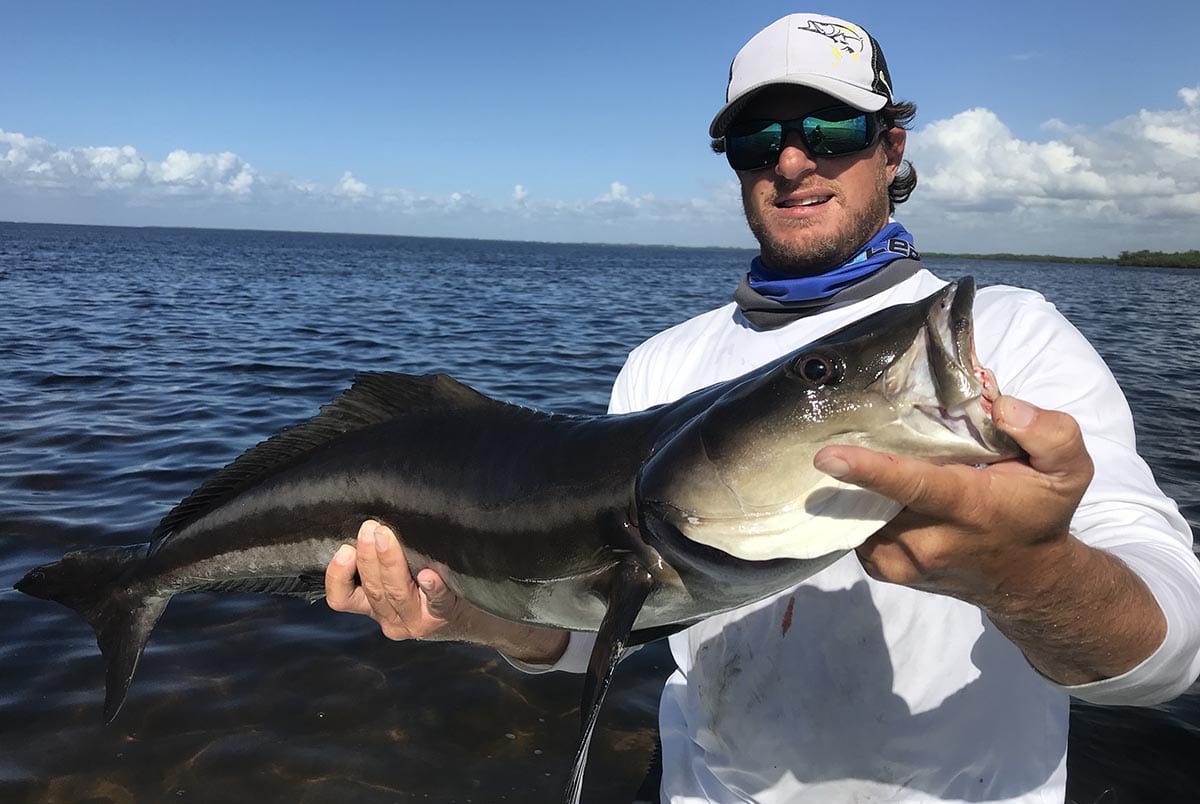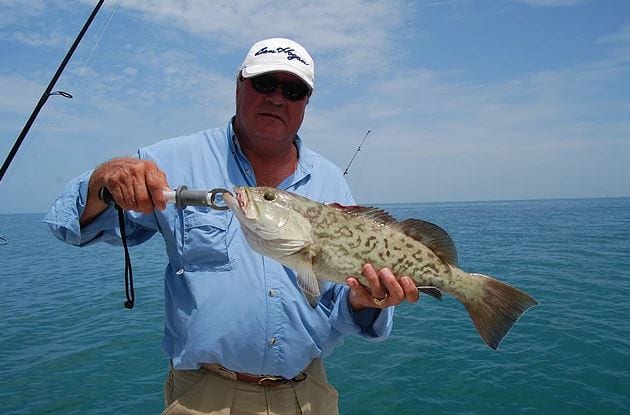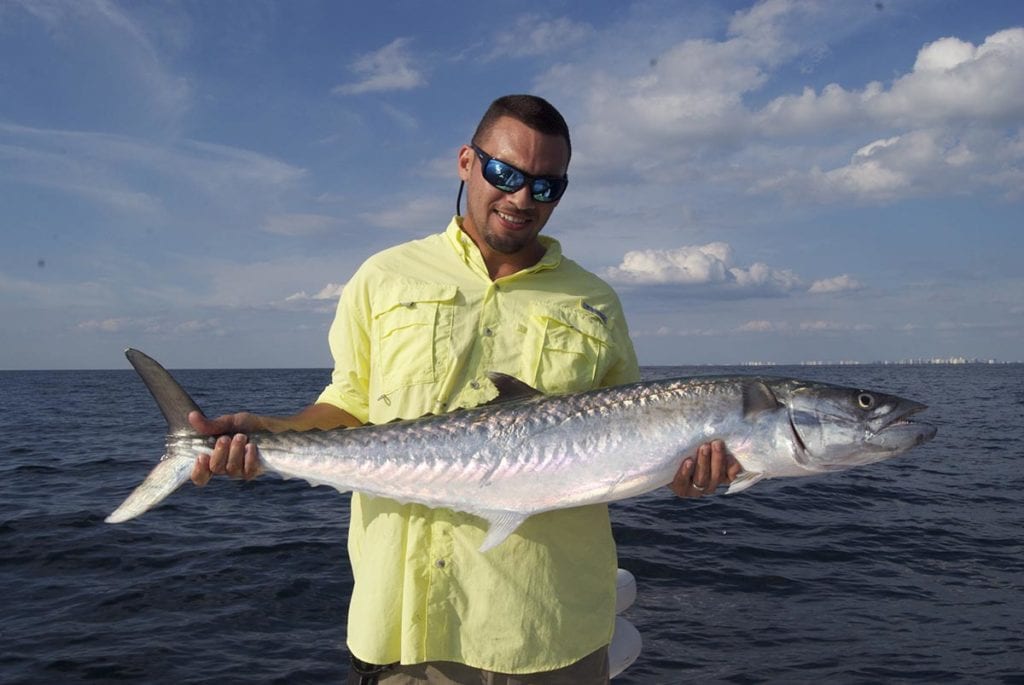
The fall fishing season off Marco Island and Naples doesn’t begin with a calendar change. It begins when the weather stabilizes, bait schools tighten, and predators return to the reefs. That transition often happens quietly, sometime between late September and mid-October. Once it starts, the fishery becomes focused, accessible, and highly productive if you know how to adjust your approach.
Fishing this region in fall is less about choosing a single target and more about staying mobile, reading the water, and rotating through techniques that match conditions. This article lays out how to fish the nearshore zone once summer fades, what species to expect, how to rig and react, and where to launch when everything comes together.
Starting with Strategy
Before building your day around a single species, it helps to set your boat and rods up to handle multiple scenarios. Fall weather creates a mix of bottom-feeding structure species, mid-column roamers, and fast-moving surface predators. Rather than choosing one method, the most consistent trips start with three baseline options:
- Bottom presentation: fish-finder rig with live or cut bait, 60 lb fluorocarbon leader, and a strong circle hook.
- Free-line or drifted bait: fluorocarbon leader in the 20–30 lb class with a small live sardine or threadfin, especially when fish rise in the column.
- Surface casting setup: 4000 class spinning reel with a spoon, jig, or topwater plug tied on, ready for mackerel or cobia that show themselves without warning.
These options cover most of the strike zones you’ll encounter. With a spread like this, you can move from snapper to kingfish without wasting time re-rigging. The goal is to keep baits in the water and rods within arm’s reach when conditions change.
The Seasonal Reset
Fall begins subtly in this part of Florida. The mornings lose their humidity first. Later, thunderstorms lose their regularity. Wind starts shifting direction at night. Somewhere in that pattern, the nearshore zone begins to reset.
The water clears up. Bait schools that were dispersed by rain and runoff begin forming dense pods along the beaches and reef lines. Sardines, pilchards, and threadfins move back into predictable channels. Along with them come kingfish, Spanish mackerel, cobia, mangrove snapper, and gag grouper.
From the surface down to the bottom, feeding becomes more organized. Water temperatures stabilize in the mid- to upper-70s. Reef fish begin holding consistently on hard bottom within 4 to 9 miles of shore.
Reading Conditions and Adapting
Every trip begins with a read of the tide, wind, and clarity. Tide movement through Gordon Pass or Caxambas Pass creates current lines that drive activity offshore. These passes feed the nearshore reef systems, and when the tide runs clean and strong, the bait gets flushed straight out over structure.
Wind direction tells you how to approach your first stop. Light northeast winds typically bring clearer water and allow safe access to reefs farther out. South and west winds, even if light, can reduce visibility and stack chop along shallower reefs.
Barometric pressure is a reliable indicator for activity. Fish respond to rising or stable pressure more consistently than falling conditions. Kingfish, in particular, tend to show more aggressively 24 to 48 hours after a front, especially when the wind falls out and the Gulf calms.
Target Species and Their Fall Behavior
Cobia
Cobia are long, powerful fish with a brown-to-bronze back, a flat head, and a habit of cruising near the surface alone or in small groups. They often resemble sharks when first spotted. In fall, they show up around floating debris, markers, and open water structure.
They follow rays, turtles, or move solo along current lines. Keep a rod ready with a jig or live bait, and pitch quickly. A cobia may appear and vanish within seconds. Once hooked, they fight with endurance and thrash aggressively near the boat. Plan ahead for landing space.
Spanish Mackerel
Spanish mackerel are streamlined, silver fish with yellow spots along their sides and razor-sharp teeth. They travel in schools and feed near the surface with speed and aggression. During fall, they often blitz on bait pods around structure or along color changes.
They respond best to small spoons, metal jigs, or fast-retrieved plugs. Use light tackle and keep one rod always ready when birds are working. They are fast, easy to locate, and often start the action early in the day.
Lane Snapper
Lane snapper are smaller reef fish with pink bodies, yellow lateral lines, and a dark spot on the flank. They gather in groups over sandy bottom and rubble piles, staying close to structure and the sea floor.
These fish are not picky. Cut squid, shrimp, or sardine chunks fished on a simple knocker rig are all effective. Unlike mangroves, they do not require finesse. Drop to the bottom, wait for a hit, and reset if no bite comes quickly.
Mangrove Snapper
Mangrove snapper are grayish-brown with sharp teeth, a rounded profile, and a wary disposition. They hold around structure in 20 to 60 feet of water and respond strongly to chum.
Fall is a great time to target them as they return to the reef systems and feed near the surface when current is moving. Use 15–20 lb fluorocarbon and live pilchards or small chunks of bait. Free-line or lightly weight the rig to match their depth. Quick strikes are common, and hesitation often means a missed fish.
Gag Grouper
Gag grouper are deep-bodied, camouflaged fish with mottled gray-brown markings. They are powerful bottom dwellers known for ambushing prey and diving into structure when hooked.
As fall progresses, gags move into 30–65 feet of water and settle on ledges, reefs, and large debris piles. Live pinfish are the top bait. Use heavy gear, lock the drag, and engage immediately. Gags are unforgiving and will break off quickly if given slack.
King Mackerel
Kingfish are long, torpedo-shaped predators with a green-blue back and silver sides. Their size and speed make them a prized catch during fall when they migrate past nearshore reefs.
These fish feed along bait lines, attacking from below. Troll live threadfins or blue runners with stinger rigs. Keep wire leaders short but strong. When kings are active, hookups come fast, and doubling up is common. Fight them with steady pressure and keep others in the spread while one is on.
Local Reef Systems and Access
Collier County offers a wide network of nearshore reefs designed to hold life during transitional periods. Sites like the Baja Reef, Blue Hole, and Walton Reef are accessible from most launches and can be reached within 30 to 45 minutes depending on conditions.
Good launch points include:
- Caxambas Park: Located at the southern end of Marco Island, close to deeper nearshore spots and quick access to reef structure.
- Bayview Park (Naples): Best for central runs to structure off Naples and Keewaydin Island.
- Shell Island Road: Offers access to Ten Thousand Islands and more protected water in case conditions are marginal.
Know your coordinates before launching and use reef charts that match your unit’s format. Many locations are not marked on the water and require GPS accuracy for setup.
Building Around the Bite
The fall pattern in this region does not last long. Water temperatures drop just enough to pull predators back in. By mid-winter, clarity changes again, winds increase, and pelagic fish shift farther south.
The best days come in the quiet stretches between cold fronts. Clean tide movement, low wind, and a good bait spread on the finder usually signal strong activity. Arrive early. Keep your approach quiet. And build your day around the reef zones that show the best combination of current and bait.
Trips that switch between bottom rigs, free-line setups, and trolling spreads tend to produce the most consistent results. Adaptation, not repetition, is what defines a good day.
Guided Access With Chasin Tales
Not every fall window is easy to hit. Some mornings bring glass calm water. Others bring tricky current or scattered fish. For those who want to fish these transitions with a local guide who knows the reef network and the timing that makes it work, Chasin Tales Fishing Charters runs fall nearshore trips out of the area with gear, bait, and strategy built for this exact pattern.
We stay mobile, fish real-time structure, and follow the movement of snapper, kingfish, grouper, and more as they settle in just outside the beaches. Book a trip with us when the mornings cool, the water clears, and the fall bite begins to gather. The fish are here, close, active, and moving. We know where to meet them.


